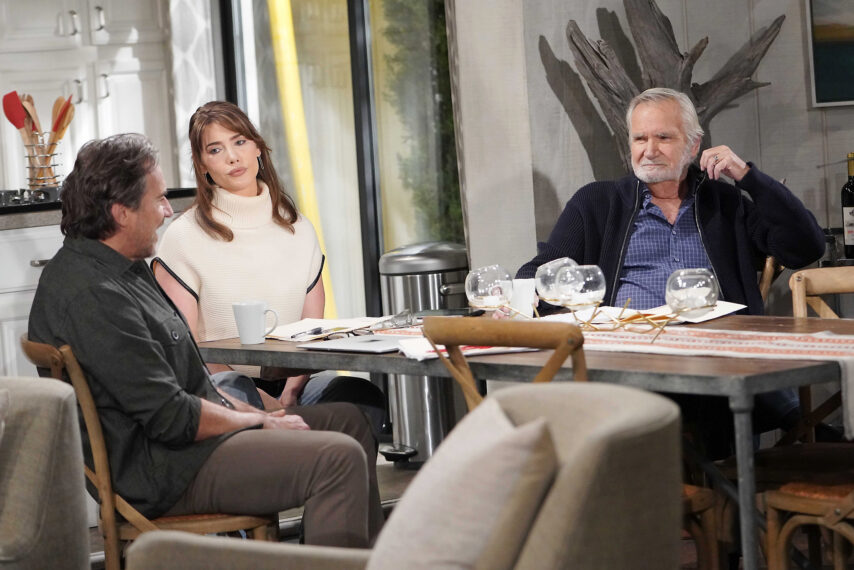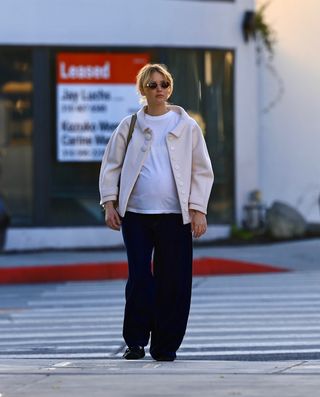
Why did Bruce Dickinson leave Iron Maiden in the ’90s?
It’s one of the biggest lineup departures in the history of heavy metal and it occurred not long after Rob Halford and Judas Priest parted ways. It left a massive void in metal as the genre endured the ’90s while Metallica, Pantera and Megadeth held things down and kept it from going out of vogue entirely (commercially, at least).
An iconic, successful singer is typically viewed as the most difficult member of a band to replace and Iron Maiden were no exception after the frontman pursued a solo career and other ventures unrelated to music.
Let’s dive into this historic departure.
What Year Did Bruce Dickinson Leave Iron Maiden?
Bruce Dickinson left Iron Maiden in 1993. He first joined in 1981 as the replacement for Paul Di’Anno and sang on seven albums during his first tenure with the group.
When Was Bruce Dickinson’s Last Performance With Iron Maiden Before the Reunion?
Dickinson played his final show with Iron Maiden on Aug. 28, 1993. The performance was broadcast live as a pay-per-view event in the U.K. and U.S., later released on VHS and Laserdisc under the title Raising Hell.
It’s one of the metal legends’ most unique shows as it infamously featured magician Simon Drake and a quirky narrative that culminated with the theatrical killing of Dickinson, who was put in the iron maiden torture device the band’s name is derived from. Other members were killed onstage as well, signaling the death of Maiden’s illustrious first era with Dickinson as the frontman.
What Were Bruce Dickinson’s Reasons for Leaving Iron Maiden?
Iron Maiden’s two ’90s records with Dickinson (No Prayer for the Dying and Fear of the Dark) were recorded in a studio inside a barn owned by bassist and founder Steve Harris.
In his autobiography What Does This Button Do?, Dickinson says of his waning days in Iron Maiden after the Fear of the Dark tour:
We were going home, and it was another self-satisfied success. I had tried to raise my concerns about the sound and production of our albums, about the assumption of perfection and the lack of honest criticism within the band. Everyone looked at me as if I had lost my mind. Maybe I had, or maybe we were on the slow trajectory to a luxurious creative extinction.
Inspired by a quote in the LA Times by writer Henry Miller — “All growth is a leap in the dark, a spontaneous unpremeditated act without the benefit of experience,” — Dickinson knew he had to leave the band after one last tour, capped by the aforementioned Raising Hell performance.
Who Replaced Bruce Dickinson in Iron Maiden?
Dickinson was replaced by Wolfsbane singer Blaze Bayley, who officially joined the band in 1994 and departed in 1999 once Maiden welcomed Dickinson (and guitarist Adrian Smith) back to the fold.
Bayley’s two albums fronting Maiden — 1995’s X Factor and 1998’s Virtual XI — marked a continued downturn in success for the British metal vets. His voice is much deeper than Dickinson’s and marked a radical departure from what fans had grown accustomed to over the previous era.
Patrick Ford / Redferns, Getty Images
Patrick Ford / Redferns, Getty Images
READ MORE: Where Did Iron Maiden’s Mascot Eddie Come From?
Was Bruce Dickinson Successful After Leaving Iron Maiden?
Success is measured in many different ways, but it’s fair to say Dickinson’s solo career was rather well-accepted by fans the world over. He gained momentum with ensuing solo records, even if they didn’t light up the charts.
By the end of the ’90s, he was certainly putting out stronger material than Maiden did in his absence and he even recruited Adrian Smith on two solo albums to close out the decade.
What Albums Did Bruce Dickinson Release After Leaving Iron Maiden?
Dickinson’s solo career began in 1990 with the release of Tattooed Millionaire, which featured guitarist Janick Gers, who replaced Adrian Smith in Iron Maiden that same year. Its successor, the oddly titled Balls to Picasso (released in 1994), was a more serious attempt at a solo album than a fun rehashing of ’70s rock influences. It yielded the beautiful acoustic hit “Tears of the Dragon,” his most well-known solo song.
In 1996, Skunkworks arrived as Dickinson engaged an alt-metal/rock style that fit in nicely with the times, which can’t be said about so many of his metal peers who also dabbled with the changing musical tide.
The next pair of albums, featuring Smith and guitarist Roy Z (and Roy’s Tribe of Gypsies bandmates, who also played on Balls to Picasso), saw the singer return to a more metallic sound. Accident of Birth and The Chemical Wedding are legitimately among the best metal albums released in their respective years (1997 and 1998). Both contain some of his career-best studio performances.
When Did Bruce Dickinson Return to Iron Maiden?
Both Dickinson and Smith returned in 1999, bringing Iron Maiden to a six-piece for the first time ever. The lineup of Bruce Dickinson, Steve Harris, Adrian Smith, Dave Murray, Janick Gers and Nicko McBrain has been intact ever since.
Ranking the Opening Song on Every Iron Maiden Album
Ranking the opening track on every one of Iron Maiden’s studio albums.
PLAYLIST: Early Traditional Metal
Over 200 songs! Listen/follow here.























![Eminem – Somebody Save Me (feat. Jelly Roll) [Official Music Video] Eminem – Somebody Save Me (feat. Jelly Roll) [Official Music Video]](https://i.ytimg.com/vi/Vwa0HenQMi4/maxresdefault.jpg)


![Moneybagg Yo – TABOO MIAMI [Official Music Video] Moneybagg Yo – TABOO MIAMI [Official Music Video]](https://i.ytimg.com/vi/iAgp-a5lTZ4/maxresdefault.jpg)